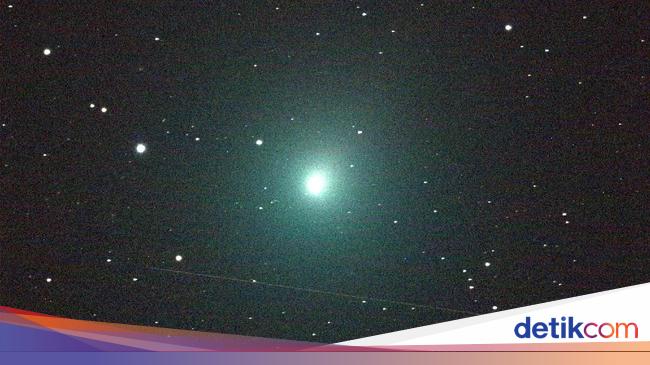Jakarta –
Head comet can be green, but not so with the tail. It took scientists decades to solve this puzzle.
Frequently, the Kuiper Belt and Oort Cloud throw galactic balls of ice, dust, and rock from the 4.6 billion year old remnants of the formation of the solar system.
These spheres, or comets as we know them, undergo a colorful metamorphosis as they cross the sky, with the comet’s head turning a bright green color that gets lighter as it approaches the Sun.
But strangely, as quoted from Scitechdaily, Thursday (12/23/2021) this green shadow disappeared before reaching one or two tails that were left behind. comet.
Puzzles for almost a century
Astronomers, scientists, and chemists have been puzzled by this mystery for nearly a century. In the 1930s, physicist Gerhard Herzberg theorized that the phenomenon was caused by sunlight destroying diatomic carbon (dicarbon or C2), a chemical created by the interaction between sunlight and organic matter in the head. comet, but as unstable dicarbon. This theory is difficult to test.
A new study led by UNSW Sydney, published December 20, 2021 in the Proceedings of the National Academy of Sciences (PNAS), has finally found a way to test this chemical reaction in the laboratory. Thus, the 90 year old theory is correct.
“We have proven the mechanism by which dicarbon is broken down by sunlight. This explains why the green coma, the hazy layer of gas and dust that surrounds the nucleus, shrinks as a comet approaches the Sun, and also why the tail comet doesn’t go green,” said Timothy Schmidt, professor of chemistry at UNSW Science and senior author of the study.
The main component of this mystery core, dicarbon, is highly reactive and is responsible for giving comets much of their green color. Dicarbon consists of two carbon atoms stuck together and can only be found in highly energetic or low oxygen environments such as stars, comets, and the interstellar medium.
Dicarbon is not present in comets until they approach the Sun. As the Sun begins to warm the comet, the organic matter living in the ice core evaporates and moves into a coma. Sunlight then breaks down these larger organic molecules, creating dicarbon.
The UNSW-led team has now shown that as a comet gets closer to the Sun, extreme UV radiation breaks up the recently created dicarbonate molecules in a process called ‘photodissociation’.
This process destroys the dicarbon before it can travel far from the nucleus, causing the green coma to become lighter and shrink – and ensure the green tinge never reaches the tail. This is the first time this chemical interaction has been studied on Earth.
“I think it’s amazing knowing someone in the 1930s thought this might have happened down to the level of detail of the mechanics of how it happened. Then 90 years later, we know that’s what happened,” said Ms Jasmin Borsovsky, lead author of the study. this and a former UNSW Science Honors student.
“Herzberg was an outstanding physicist and went on to win the Nobel Prize for Chemistry in the 1970s. It was great to be able to prove one of the things he theorized.”
Prof. Schmidt, who has studied dicarbon for 15 years, said the findings help us better understand both dicarbon and comets.
“Dicarbon comes from the breakdown of larger organic molecules that freeze into nuclei comet, the kind of molecules that are the substance of life, “he said.
“By understanding their lifespan and destruction, we can better understand how much organic matter evaporates from comets. Discoveries like this may one day help us solve other space mysteries.”
Watch Videos “China’s Plan to Complete Tiangong Space Station“
[Gambas:Video 20detik]
(rns/fay)
– .

